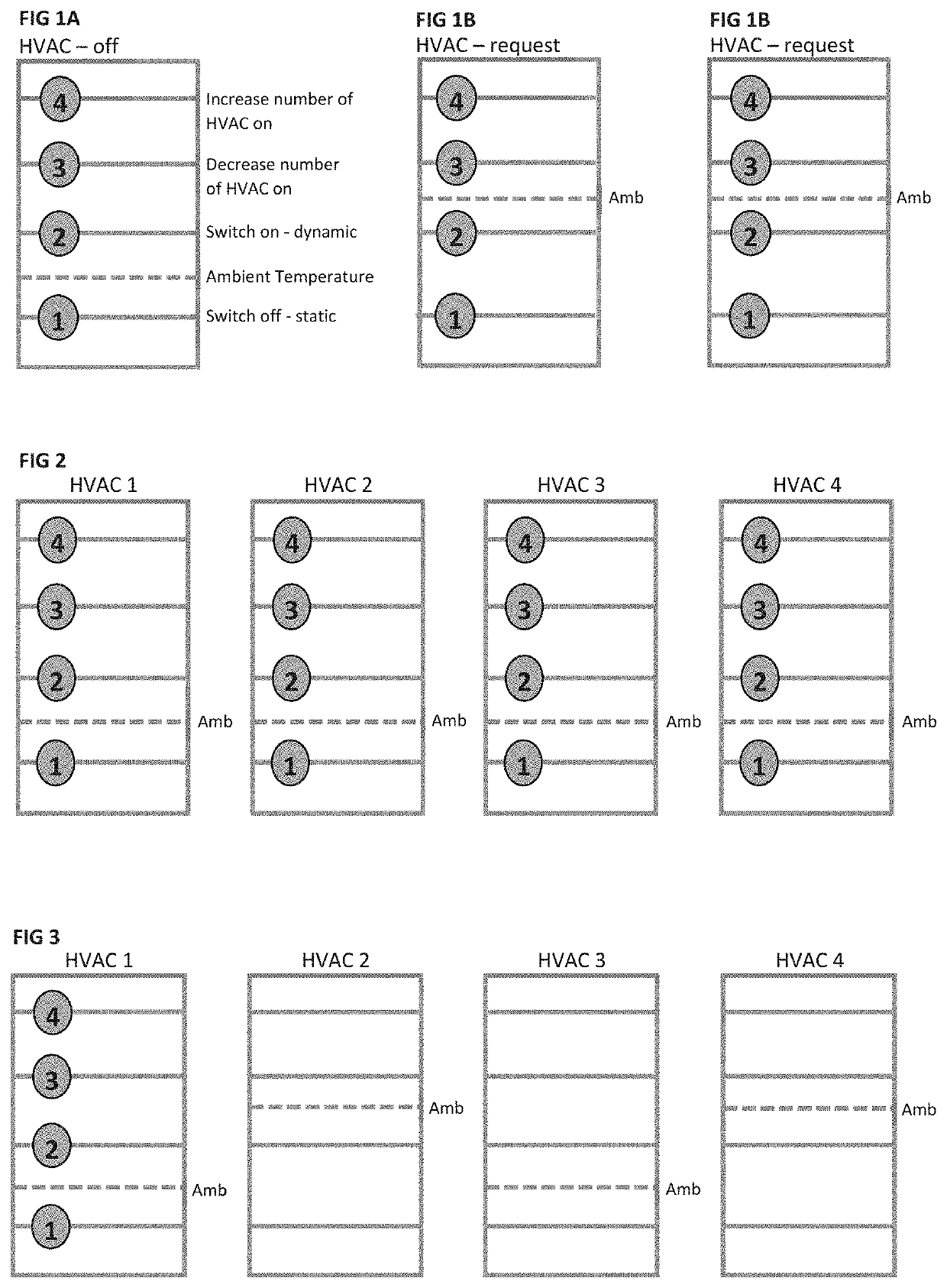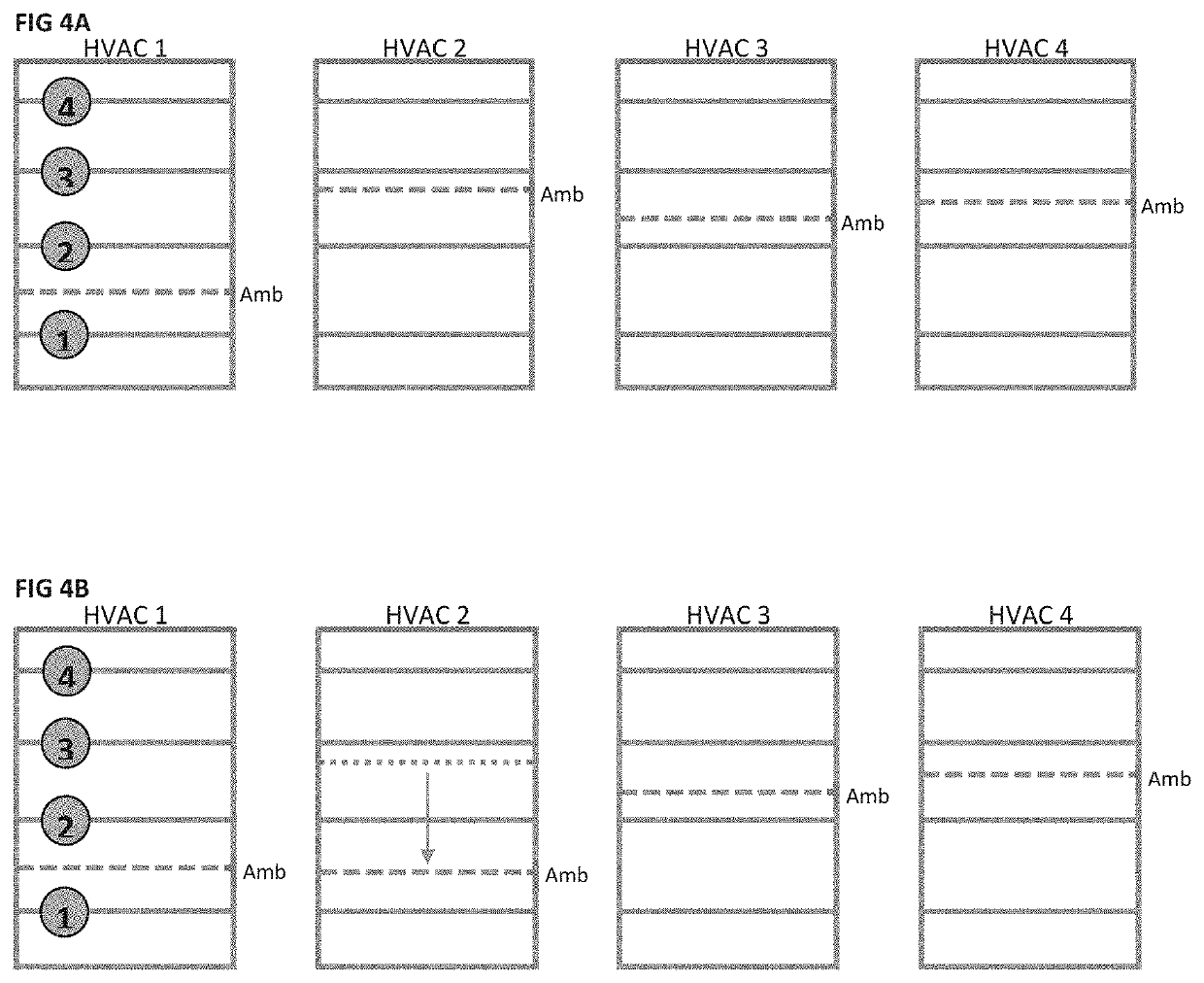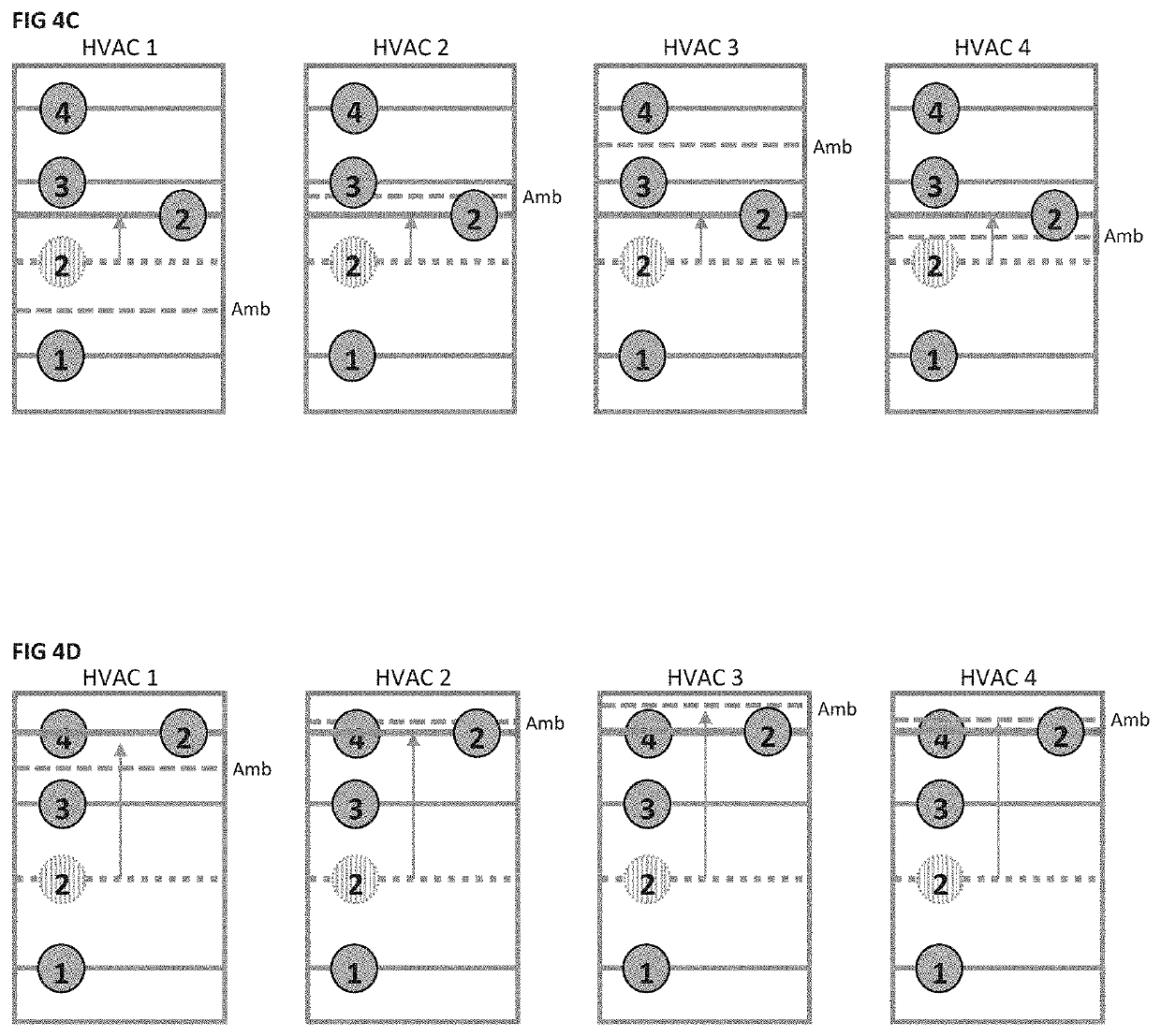Method, system and apparatus for controlling sensing devices of a HVAC system
a sensing device and hvac technology, applied in the field of energy consumption, can solve the problems of system failure to account for the thermal characteristics of the building, system failure to meet the needs of current weather conditions and temperature of the home, and laborious maintenance work, so as to reduce the impact of user comfort, maximise energy consumption, and improve the participation rate of incentive-based demand response programs
- Summary
- Abstract
- Description
- Claims
- Application Information
AI Technical Summary
Benefits of technology
Problems solved by technology
Method used
Image
Examples
example 1
[0098]FIG. 2 illustrates Example 1, in which all HVACs are off and ambient temperature is below SP1.
example 2
[0099]FIG. 3 illustrates Example 2, in which a predetermined number of HVACs are running. Specifically, two HVACs (HVAC 2 and HVAC 4) are on.
example 3
[0100]FIG. 4A illustrates Example 3, in which a predetermined number of HVACs are ON. One or more additional HVACs are requesting to be ON. Specifically, HVAC 3 has requested permission to switchON. However, before this can occur, one other HVAC must switch off, e.g. HVAC 2 or HVAC 4.
[0101]FIG. 4B illustrates the next phase of Example 3 when, during a grace period, (e.g. 10 minutes) a HVAC (e.g. HVAC 2) can be turned OFF as the ambient temperature decreases below SP2 (arrow). HVAC 2 would not turn OFF in the absence of a request because it has not reached yet SP1.
[0102]FIG. 4C illustrates a further phase of Example 3 when the ambient temperature of the rooms with HVAC ON does not fall below SP2 during the grace period, leading to an increase in SP2 to compensate. As a result, HVAC 4 can be switched off as the ambient temperature is below SP2.
[0103]FIG. 4D illustrates the next phase of Example 4 when increasing SP2 (FIG. 4C) with the aim of at switching OFF a HVAC that is currently r...
PUM
 Login to View More
Login to View More Abstract
Description
Claims
Application Information
 Login to View More
Login to View More - R&D
- Intellectual Property
- Life Sciences
- Materials
- Tech Scout
- Unparalleled Data Quality
- Higher Quality Content
- 60% Fewer Hallucinations
Browse by: Latest US Patents, China's latest patents, Technical Efficacy Thesaurus, Application Domain, Technology Topic, Popular Technical Reports.
© 2025 PatSnap. All rights reserved.Legal|Privacy policy|Modern Slavery Act Transparency Statement|Sitemap|About US| Contact US: help@patsnap.com



